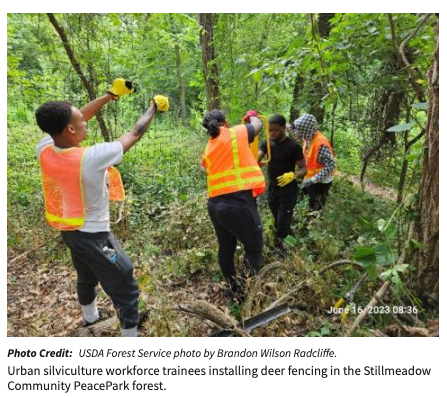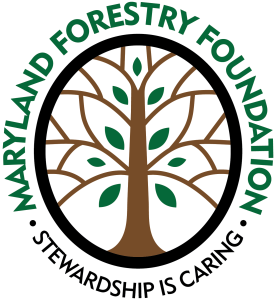
In the face of a changing climate and projected increases in urban population density over the coming decades, the preservation of urban tree canopy and the corresponding ecosystem services provided have become critically important considerations. A distinguishing feature of urban tree canopy is a variety of land ownership and, as a result, unequal management of tree canopy is a common occurrence. While urban planning and management strategies are major components in the maintenance of urban greenspaces, it is equally important to have individuals and institutions within our communities embracing the role of land stewardship. Beyond the economic and ecological benefits, the public health benefits associated with creating a connection between the residents and the land they reside on is paramount to designing sustainable cities in the future.
A wonderful example of land stewardship in action is the Stillmeadow Community Fellowship located in southwest Baltimore, MD. After a massive flood event in 2018, Pastor Michael Martin and his congregation had the realization that runoff from the church property could be a contributing factor to future flooding in the community. In response to this, church leadership acted quickly to install rain barrels and cisterns on the property to help mitigate runoff. This began an impassioned effort to turn the church’s ethos of “[bringing] what is sacred about the forest into our structured setting” into tangible community based action by committing to making the property more sustainable via restoration of its 10 acres of degraded urban forest. Working with the USDA Forest Service and other research and non-profit organizations, a large reforestation effort was completed, and several research studies are currently underway in the park. Additionally, a variety of sustainable stewardship practices have been instituted within the Stillmeadow Community Fellowship: ranging from solar panel installation, composting, to the creation of pollinator and vegetable gardens. The Fellowship also seeks to inspire land stewardship, sustainability, and equity in the next generation by hosting summer youth nature education programs and after school programs at the Stillmeadow PeacePark Learning Center.
Over the last several years, this formerly degraded forest patch in southwest Baltimore has been transformed into a usable, accessible, forested park space for residents to enjoy. Stillmeadow’s recognition of responsibility and quick actions in response to environmental impacts are an outstanding model for how an institution can address sustainability concerns directly. Moreover, the efforts to spread awareness of these issues within their community and beyond also speak to the immense value of community based action in the face of climate change indifference. While the value of urban tree canopy can tend to focus on more economic metrics like ecosystem services, the importance of this kind of community engagement and action in regard to forest stewardship cannot be overstated. Showcasing these local community efforts serve as a reminder that forest conservation in urban areas IS happening and is as equally important as forest conservation in more exotic, remote locales. The Stillmeadow Community Fellowship’s desire to preserve their forest and to lead their community in land stewardship by example is one instance among many across Baltimore City where community members have led the charge in forest conservation.
For more information about Stillmeadow Community Fellowship and opportunities to get involved: https://www.stillmeadowpeacepark.com/
For more information about ongoing USFS research projects at Stillmeadow PeacePark: https://www.fs.usda.gov/about-agency/features/science-and-renewal-converge-stillmeadow-community-peacepark-forest
